Void Interactive launches Ready or Not SWAT game for consoles | interview

Ready or Not, the SWAT simulation tactical first-person shooter, is launching today on the PlayStation and Xbox consoles.
Void Interactive launched the title on the PC earlier and now it’s available on the PlayStation 5 and Xbox Series X/S game consoles. The game is about the “last line of defense” in desperate situations between the police and armed suspects.
It’s coming at a time when ICE raids in places like Los Angeles are commonplace. And while they may look similar, SWAT teams are heavily armed and armored police units that are called in for hostage rescues and other difficult standoffs. The game puts players in high-risk and realistic scenarios involving SWAT teams.
On the PC, the game sold nearly 10 million copies. The console game has a very big wishlist in the millions, the creators said in an interview with GamesBeat.
In contrast to other shooter games, you can’t shoot everything that moves. Often, the game requires players to defuse situations involving hostages, active bomb threats, barricaded suspects, and more.
Players have the option to customize an entire SWAT team, modifying the armor, weapons, apparel and more. Weapons that came with the pre-order bonus include the M32A1 Grenade launcher, the MK-V Pistol and 590M Shotgun. The standard edition costs $50, while deluxe edition costs $70.
The SWAT game
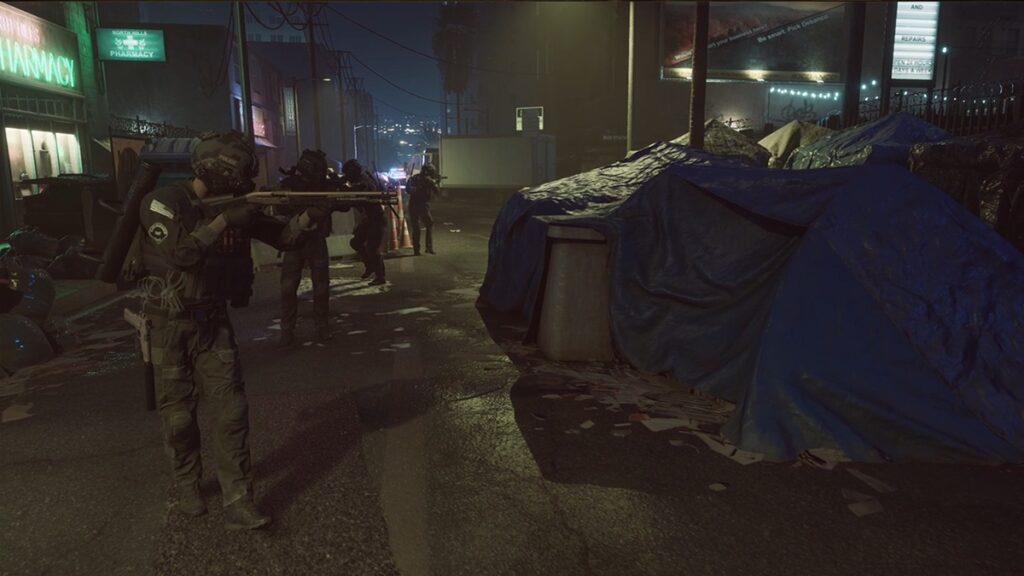
The game is set in the fictional city of Los Sueños, where the threat of violent, drug-related and property crimes is on the rise. Instances of kidnapping, terrorism and active-shooter scenarios are also increasing. When possible, citizens are urged to remain at home. If, for any reason, residents must leave their home, citizens are to exercise extreme caution when traveling the city.
The surge of crime across the greater Los Sueños metropolitan area has severely depleted LSPD resources, threatening to overwhelm the department’s ability to maintain order. In response to the growing threats facing residents, LSPD is mobilizing its Special Weapons and Tactics (SWAT) teams to respond to high-threat scenarios, including active bomb threats, barricaded suspects and high-risk hostage situations while minimizing casualties.
The city recruits SWAT team members and puts them in the field. The team will go after criminal offenders including extremists, petty criminals, crooked politicians, and organized crime engaging in acts of human trafficking, illicit drugs, pornography, and arms trafficking.
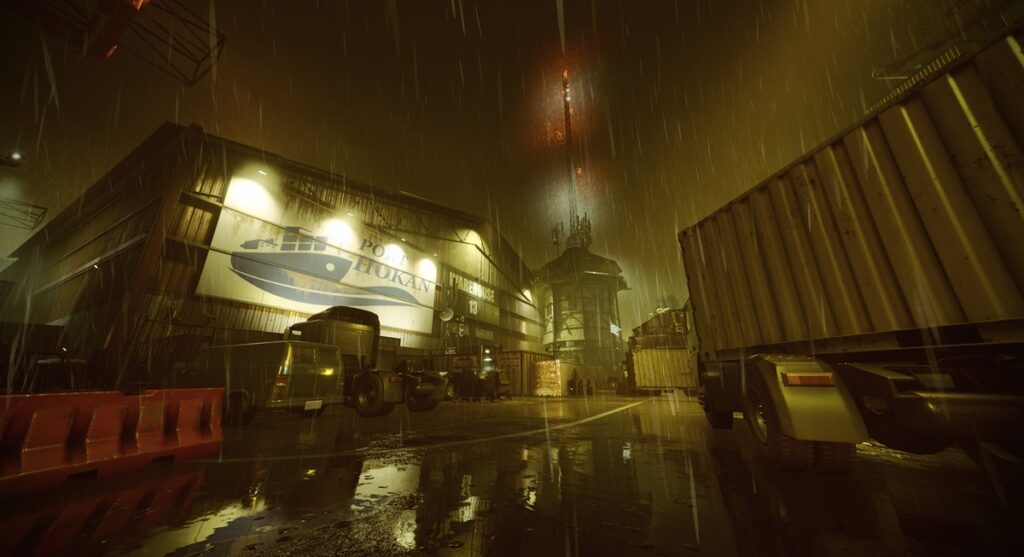
The emotional toll experienced by some of the situations you will respond isn’t something easily prepared for. Personal feelings are checked at the precinct door, every officer is expected to follow the rules of engagement regardless of the offenses committed. As the commander of the LSPD SWAT, you have to compose the team roster with unique talents, give tactical orders, meticulously plan, and carry out missions.
Officers with unaddressed deteriorating mental status may be unable to properly perform their duties or even feel compelled to quit the force. Incapacitated officers may be temporarily unavailable for missions, with the tragic prospect of death leading to a permanent loss. For SWAT Commanders in unusual circumstances based on individual choices they opt for, deadly mistakes may lead to death.
Origins

Based in Cork, Ireland, Void Interactive was founded in 2016. Rodriguez said the team started out in New Zealand, where the company started. But after a couple of years, the team started making money and moved to Ireland.
Stirling R. is COO as well as creative director, and he helped get it off the ground. Stirling was perhaps 15 or so and he played DayZ with his friends in New Zealand. They played together and Stirling asked, “Why don’t we build our own game.” That gave birth to the concept.
“They worked on it for a year and a half and decided it was complete garbage,” Rodriguez said.
Stirling said, “It was awful. It was so bad. We never made a game before. We were just throwing everything in there that we could. Speaking with his cofounder Ryan Post, Stirling said the game sucked and they decided they needed to change it.
“That reset, that refresh, really gave us a lot of energy to kind of pick it up again,” Stirling said.
Rodriguez, meanwhile, moved with his family in 2012 to New Zealand to work at a big dairy company as an executive. He was working and then, he said, “My computer takes a dump.”
He called the IT folks and Ryan Post, the IT guy, came to the office.
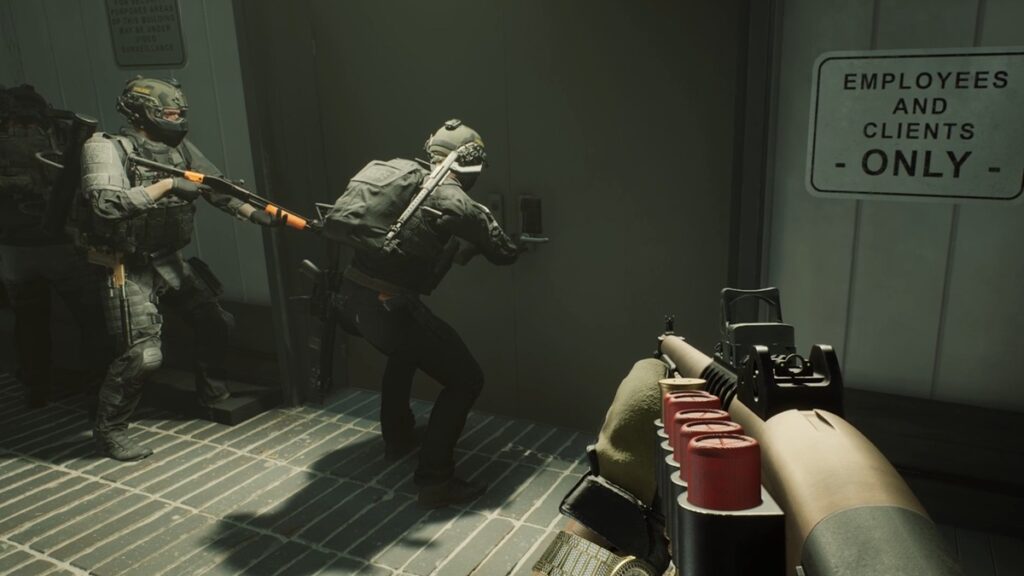
“I detected he was a bit nervous. I said, ‘Hey, take a chill. Sit down. Let’s have a chat. And that’s what started a conversation,” he said.
He asked Post what he did for fun and he talked about computer games. He said he was making a game with a couple of buddies from Australia. Post told Rodriguez about the SWAT tactical shooter game idea, and in an instant, he saw it.
“You know how they say, sometimes your life flashes before your eyes? I was instantly taken back to when I was 12 years old in 1984. There was a massive shooting in San Ysidro, California, at a McDonald’s restaurant,” he said.
A man with an Uzi machine gun, a long rifle and a pistol wne into a McDonald’s restaurant and he just started shooting everybody. Rodriguez’s cousin was a worker inside that McDonald’s. At the time, the family saw what was happening on TV and didn’t know if the cousin, Alicia, was OK or not. Then a SWAT team came in and a SWAT sniper killed the man.
“My cousin and another colleague had managed to hide in a janitor’s closet behind the kitchen and were rescued. She was completely traumatized,” Rodriguez said. “So when I heard Ryan say they were going to put you in the boots of a SWAT police officer, I connected in that moment. Instead of calling it a game, in my mind, I started thinking about it as a digital experience. We talked for a couple of hours.”
Then Post fixed Rodriguez’s computerin a couple of minutes. He started doing research about the topic. Then he concluded, “There’s room for this product. I feel like I can really get passionate about it.”
And Rodriguez called up Post and said, “We’re going to finish the game together.” Then they flew to Melbourne, Australia, to talk with Post’s friends on the project. They told him about the vision and Rodriguez decided to fund the project and run the business. They called it Void Interactive after the concept of an empty space.
Rodriguez used to watch the old SWAT TV series, and he was a fan of games thanks to his father’s interest in them.
“There was always an appeal to playing a game where your main rule was not to just kill everybody. There was an extra layer on top, and that honestly fell by the wayside in first-person shooters,” he said.
Making the game
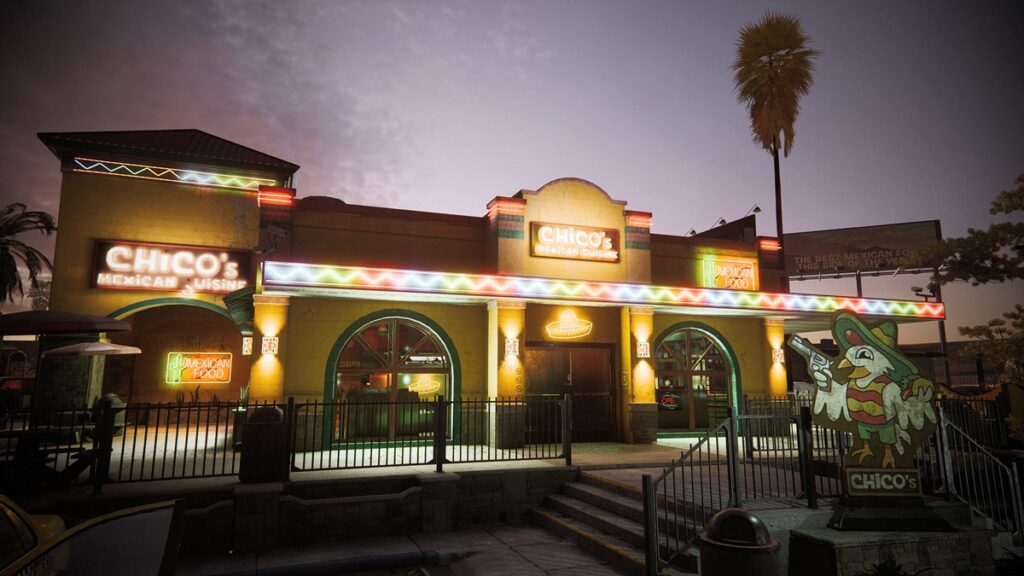
The appeal of the game was that it could take place in real environments, much like Rainbow Six Vegas, a big hit in the genre by Ubisoft, Stirling said. That game was different, with its focus on soldiers hunting down terrorists.
Yet he felt the fear and yet the spaces were somewhat boring. Stirling was a character artist and he and his buddies felt like the appeal of their game would be exploring unique environments, interesting architecture, and they eventually landed in an environment resembling Los Angeles.
“There was such a diversity of places and art and people,” Stirling said. “If you look at any footage from those early days, it kind of shows we were feeling our way along for quite a while trying to figure out how the hell do you even design a game and you get this stuff working effectively. It’s not as simple as just putting a gun on screen and just letting you run forwards and backwards.”
Yet they built the team and got the work done. The title appeared to 18-year-old to 35-year-old players, many of them males and ex-military or ex-police. The game finally came out in 2021 and it was popular. Rodriguez realized how popular when he was traveling and a woman stamping his ticket asked him about his Ready or Not hat.
She said, “You play too? I love that game.” Rodriguez said he was on the team. That’s when he realized how popular it was.
Walking the ethical line
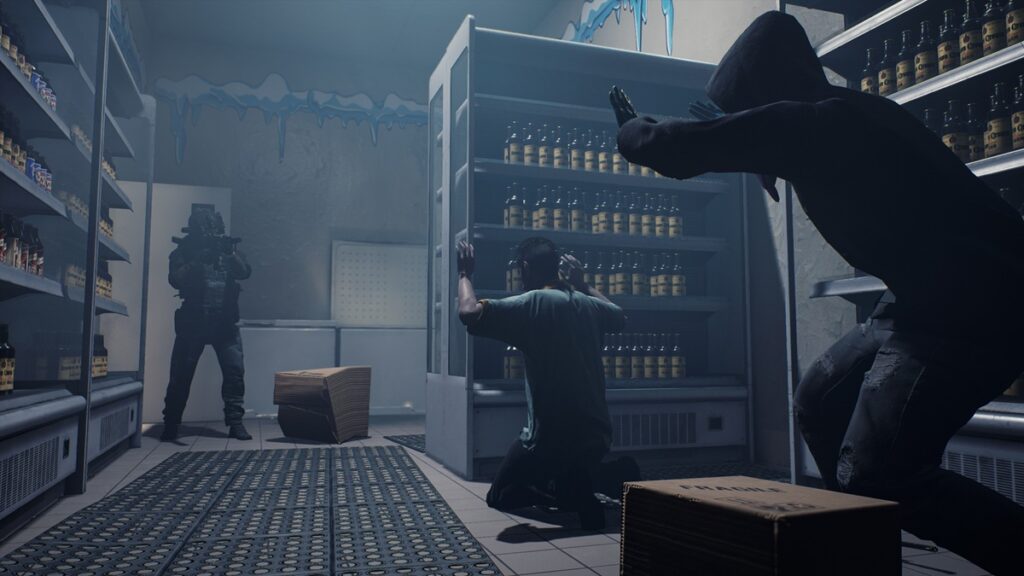
Of course, some people didn’t like it as the game touched on sensitive subjects. There was a mission with a shooting at a nightclub, and people reacted poorly to it because it resembled a real-life shooting. Was it appropriate?
“We’ve had those conversations internally many times, and we always head back to the same place,” Stirling said. “We don’t take a position on anything. We’re apolitical, non-religious. We don’t proselytize any particular view for or against. We have a need and an urge to present similes of life in these tough situations, and then give people opportunities to engage with them in what is close to a real experience.”
He noted that when you’re making a game, you sometimes need to take creative decisions that might seem a bit exaggerated. The nightclub level had hundreds of bodies in a space, and it was criticized. But there are ways to explore the mistakes that are made in the split seconds of an attack and how SWAT teams can make mistakes or the right calls.
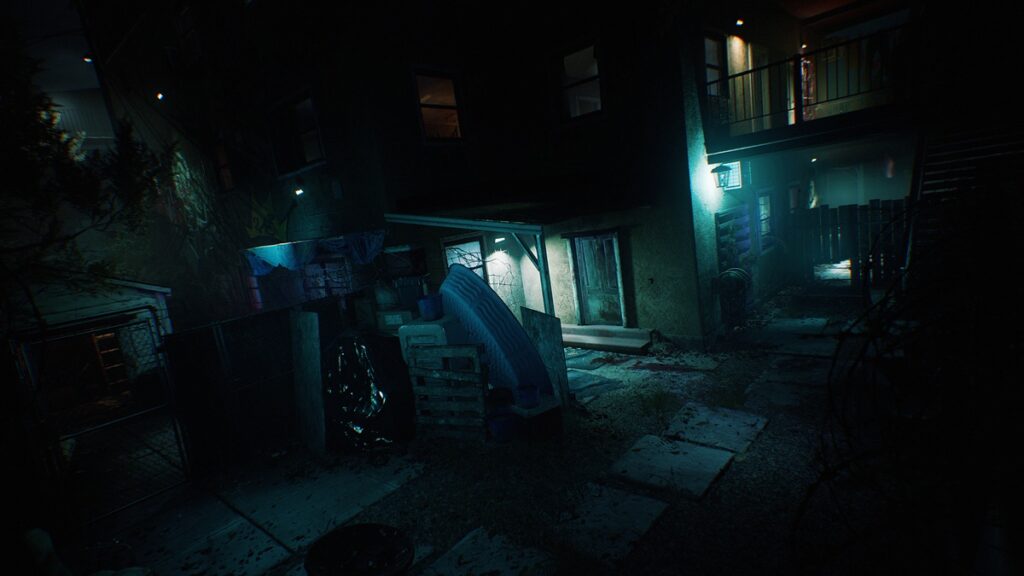
People start to ask questions like, “How did it go so wrong?” Stirling said. “While the intent was necessarily to do this, I like the fact that the game creates an opportunity for you to decompile what goes wrong in these more chaotic situations. There is a lot of confusion, there’s a lot of overwhelming emotions that come through when you’re playing some of these missions.”
The team found that these kinds of emotional beats in the gameplay experience, and the nature of the combat and the threats creates a whirlwind experience that you have to navigate as a player, Stirling said.
He also said that some topics like school shootings are “obviously not the right thing” to depict in the game. But in the tough situations, there is time to deconstruct what happens in the situations. The game is full of complexities and moral quandaries.
Yet the context matters. Your job in the game is to try and save everybody, or save as many people as you can, Stirling said.
“This gives us a little more leeway to offset the horrifying nature of these things,” he said. “You’re never stopping something before it happens. There has already been a call out. You haven’t stopped the whole thing from happening. But you can stop what is going to happen next as you get in there and do your job.”
That element gives players a lot of drive to complete the objectives and finish the mission, he said.
“You want to kind of see it through and see what the solution is. There’s probably an emotional element to it,” Stirling said. “The outcomes can drive a player toward a positive include, like not using your lethal weapons, freeing hostages and reporting evidence.”
Stirling and Rodriguez did an event in Los Angeles where they showed the game to LAPD officers who had never heard of it. They appreciated the game, and that made the game makers feel good.
“We’re trying to give people a sobering experience of what it is to be a SWAT officer,” Rodriguez said.












